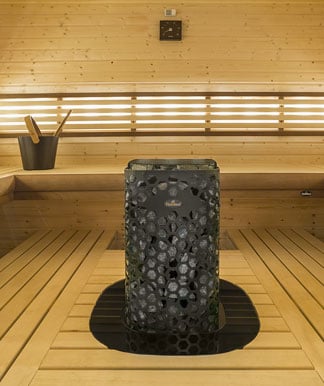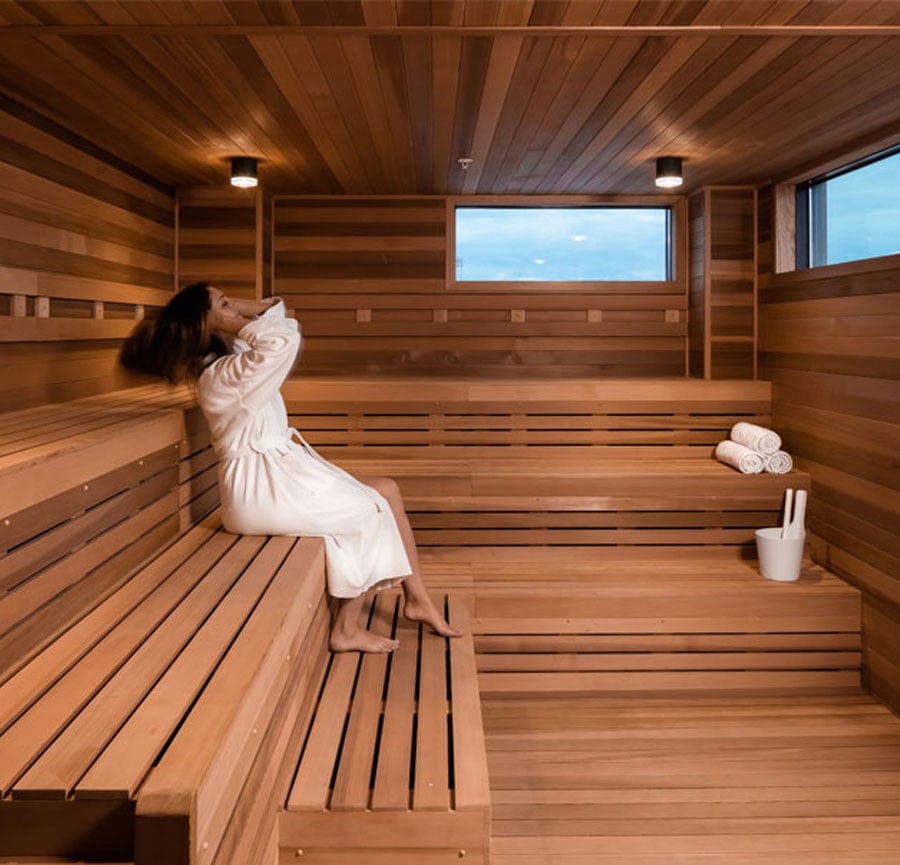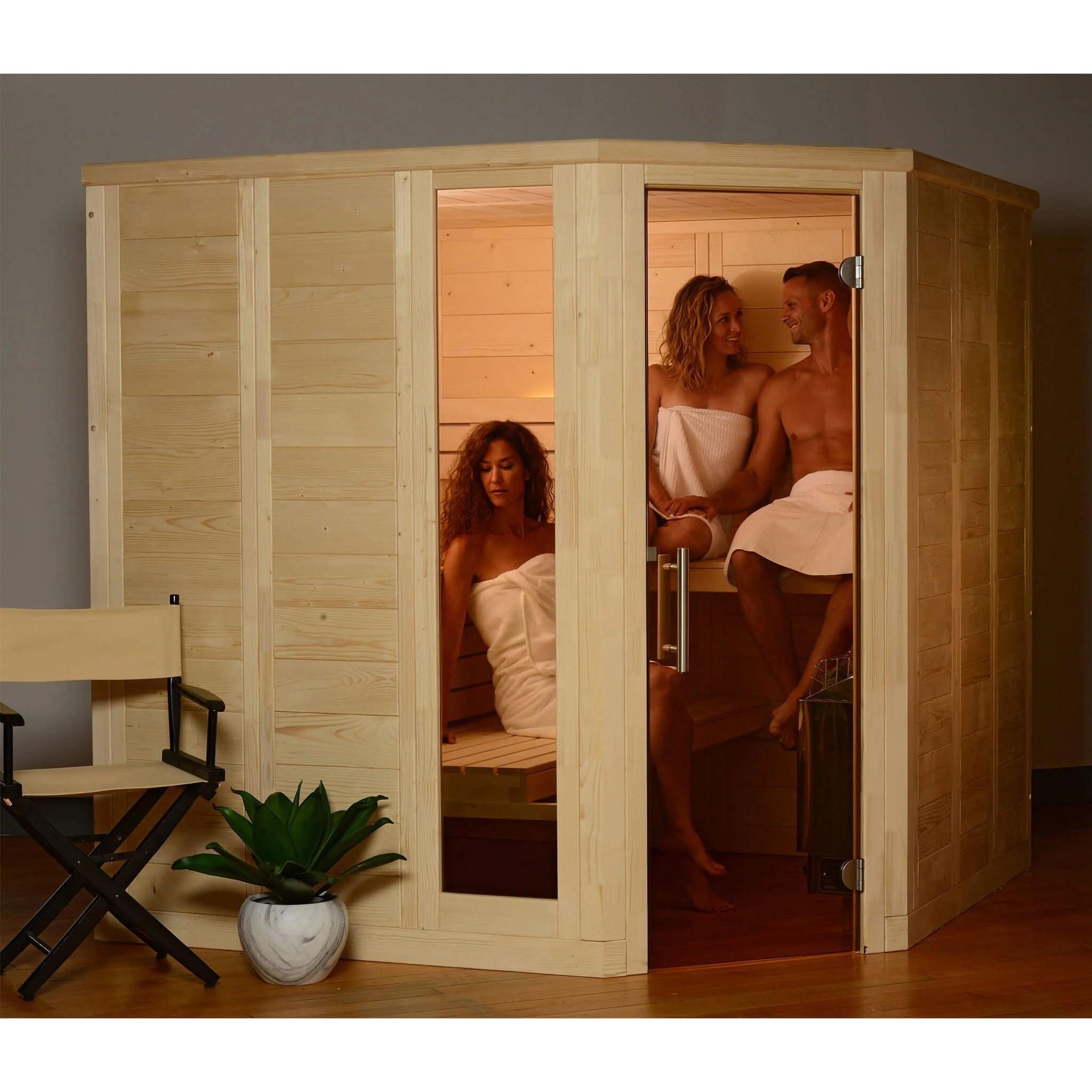The Ultimate Guide To Traditional Sauna
The Ultimate Guide To Traditional Sauna
Blog Article
6 Easy Facts About Traditional Sauna Described
Table of ContentsThe Definitive Guide for Traditional SaunaThe Best Strategy To Use For Traditional SaunaExcitement About Traditional SaunaTraditional Sauna Can Be Fun For EveryoneWhat Does Traditional Sauna Mean?
Most of the weight lost in a sauna is water loss and is re-gained upon rehydrating. However, undoubtedly sauna can be a vital component of a healthy and balanced weight-loss program. To check out the distinctions in between typical and IR saunas, I will certainly divide these into verifiable, theoretical, and fabricated differences.Thus, the best point in the saunawhich is at the ceiling straight above the sauna heateris normally between 185 and 190 F. Claims that a typical sauna goes beyond 200 F is just not real and not appropriate for electric saunas sold in the United States. The temperature level for a far-infrared sauna is usually set between 120 and 140 F; however, unlike the typical sauna, the objective in and IR room is not to accomplish a high temperature level.
As a result of this, the temperature level distinction is virtually pointless, given that excessive sweating causes both sauna kinds, yet the method of heating the body is different. In an IR sauna the bather will certainly feel hot and will certainly sweat a lot, but at a lot reduced temperature levels (Traditional Sauna). Therefore, if the goal is to invest longer time periods in the sauna, the IR sauna is a good selection
When a conventional sauna has actually been properly heated up, the sauna walls are warm, the air temperature level has accomplished established temperature and the rocks are incredibly warmed. As an intriguing side note, the warmed wall surfaces and the rocks are giving off far-infrared warmth, combined with the heated air, to produce an "enveloping warm".
All About Traditional Sauna

When the high temperature level is accomplished, the elements cycle on and off to maintain the high temperature level. A lot of typical sauna individuals appreciate pouring water over the rocks to develop steam to increase sauna humidity levels. The benefits of putting water over the rocks consist of: making the space extra comfy, moistening the nasal passages, and allowing the use of aromatherapy by mixing vital oils with the water.

When the power enters the body, it triggers the body temperature level to raise and eventually results in sweat. In an infrared sauna it is necessary for the emitters/heaters to stay on nearly frequently. Considering that there is no mass of rocks to keep warmth, the sauna will cool if the emitters shut down.
As pointed out above, the sauna bather in an Web Site infrared area wishes to place himself in front of operating emitters to get maximum benefit from the heat. The heating time for both rooms can be really different, relying on just how the areas are made use of. For a traditional sauna, a bather must enable 30-40 minutes for the room to achieve a desired temperature and to appropriately pre-heat the rocks.
The smart Trick of Traditional Sauna That Nobody is Talking About
A well created sauna will typically attain a temperature level of 150-160 F in concerning 30-40 mins. For hotter temperature levels, the space may require to Full Article warmth for a longer duration.

Typical saunas have a tendency to be larger (for this reason use more electrical energy) than infrared saunas, although conventional saunas are definitely available in one and 2 person sizes. For a two-person typical sauna, 5x6 or 5x7 size is most popular. The top bench can comfortably seat 2 or 3 people and is also long sufficient to lie down throughout the sauna session.
Fascination About Traditional Sauna
The typical price per kWH of electricity in the U.S. is roughly $0.11, so a 4.5 kW heating unit will cost approximately $.50 to compete one hour, if the heating system runs continuously for one hour. Generally a sauna heating unit will compete 75% of the first hour and 50% of succeeding hours on considering that the components cycle once the established temperature is attained.

Finally, there is a seldom reviewed difference in the social experience between the 2 spaces. While our culture has actually shed some of the social benefit of the traditional sauna experience, it can be extremely socially gratifying (Traditional Sauna). From family you can try here time in the sauna, to heart-felt conversations with substantial others, to sauna partiesthe standard sauna experience can lead to intimate mingling
Things about Traditional Sauna
Many higher end infrared areas consist of colored light treatment, noise systems and full-glass fronts.
Report this page